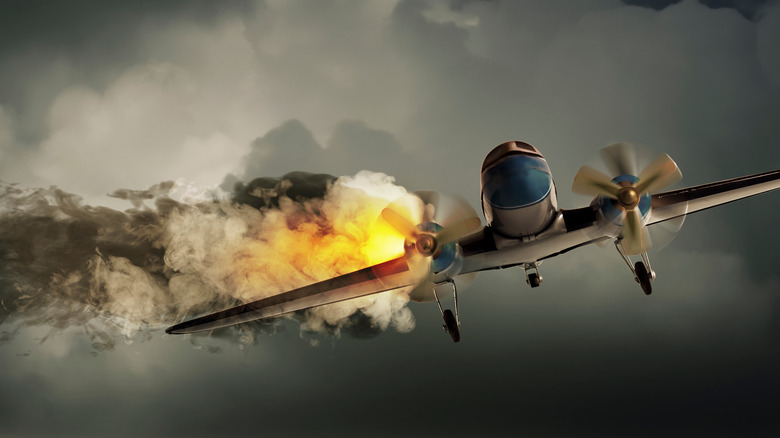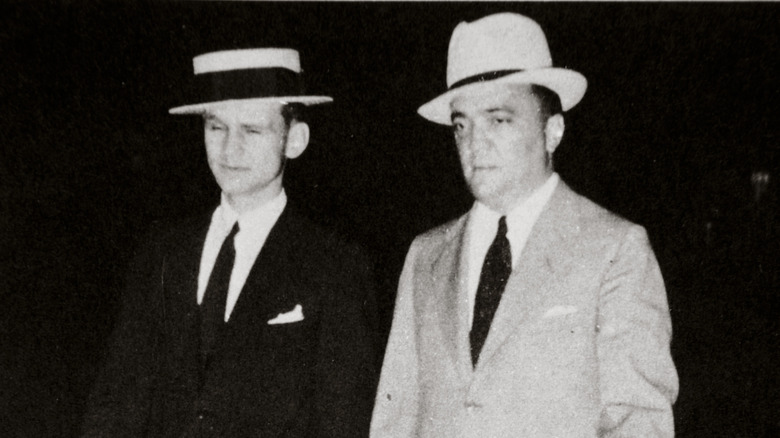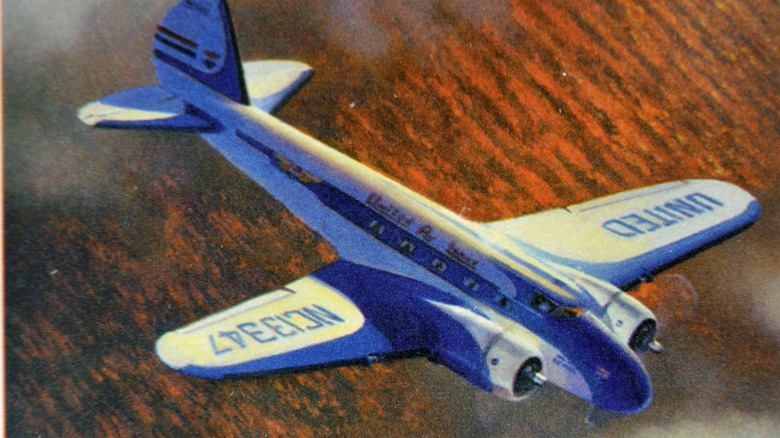The Unsolved Bombing Of United Airlines Flight 23
On the night of October 10, 1933, the skies near Chesterton, Indiana lit up as a flaming, 10-seater plane crashed to Earth. According to Chicago Magazine, residents reported hearing an explosion in the moments before the crash of United Airlines Flight 23. The plane's journey started in Newark, New Jersey before a stop in Cleveland and was headed to its next stop Chicago. Had the plane made it to Chicago, it would've continued on all the way to Oakland, California
The plane itself was a Boeing 247-D which according to the Smithsonian National Air and Space Museum is considered to be the first commercial airliner. The Boeing 247-D was 50% faster than its competitors when it entered service for United Airlines in 1933. At the controls was 25-year-old Harold Tarrant, considered at the time to be one of the airline's best pilots.
Some witnesses said they saw the plane zig-zagging as it made its rapid descent, which has since been thought to be a vain attempt to land the plane. Tragically, Tarrant, along with a co-pilot, flight attendant, and four passengers, were all killed. While the exact cause of the incident has never been determined, some believe it to be the first instance of airline terrorism.
The Investigation into Flight 23 begins
A report the day after the crash from The Chicago Tribune reported that county officials had "believed that one of the motors or a gasoline tank blew up." However, a new theory soon emerged: that the plane had been brought down by a time bomb (via Chicago).
This theory was initially denied by federal investigators working for the Department of Commerce, as this incident predated the Federal Aviation Administration, but it was championed by Porter County Coroner, Dr. Carl Davis who said that "bits of baggage had been found riddled and torn as if damaged by an explosion of great force."
According to NBC Chicago, one of the FBI agents assigned to investigate the crash was Melvin Purvis. Not even a year later, he would be present for the shootout that would lead to the death of famed bank robber John Dillinger outside of the Biograph Theater.
In late 1935, FBI director J. Edgar Hoover ordered the Bureau's Chicago office to close the case, despite no definitive conclusion being reached.
The first suspect to emerge was passenger Emil Smith. A luggage porter had reported Smith due to his unusual behavior which included bringing a small-bore rifle and ammo onto the plane, and his particularity about the handling of a brown paper-covered package. However, it turns out that Smith was going to Chicago for a competition at a shooting club, and the package was recovered at the crash site.
Could labor disputes or organized crime be behind the bombing
While it was clear even at the time of the crash that Flight 23 had been brought down by an explosion, the source of such an explosion has never been confirmed. However, there are plenty of theories and even suspects.
One theory was that the bomb had been planted because of a labor dispute between pilots and the airline. According to Chicago, United Airline pilots had threatened to strike just one month before the crash. The dispute was over the airline's use of faster planes which would reduce the hours pilots would be working. This was deemed unlikely as the pilots were paid well, and had just recently received bonuses.
Others believed the incident could've been tied to organized crime. An oral history of the crash compiled by Westchester Public Library includes an interview with a man named Howard Johnson who was at the crash site in 1933. When asked if it was ever determined who planted the bomb, Johnson responded, "No, I guess it had something to do with some labor racketeer because they said that — It was all rather vague but they said that someone got on the plane in Cleveland and had a suitcase and then they got off and no one saw them take the suitcase off. So that's no doubt what happened. They just left the bomb on the plane."


